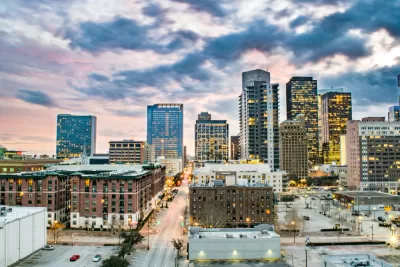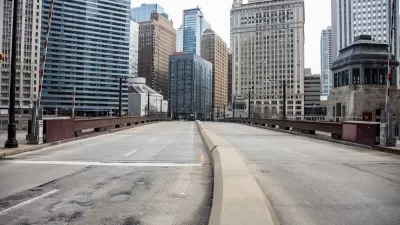Rather than ‘monofunctional’ business districts or urban playgrounds, American downtown districts could become multipurpose neighborhoods.

Writing in Wired, Amit Katwala suggests that the future of the American downtown, which has been by and large designed as “uniquely monofunctional” to serve 9-to-5 business purposes, is in not in attracting tourists with new amenities, but rather by transforming into real neighborhoods where people can live, work, and play.
As Katwala explains, “Strict zoning laws, combined with the widespread leveling of city centers in the 1960s and 1970s to build multilane highways, have created downtowns that are difficult to use for anything other than white-collar work.”
To revitalize struggling downtowns, some cities are reorienting their central business districts as “playground cities,” defined in the article as “downtown areas will be remodeled to attract leisure visitors as well as workers” but that urban scholars like Yonah Freemark warn could be a passing fad.
According to Freemark, “block-wide skyscrapers can also stifle life at ground level,” offering little interaction for pedestrians. “The park space is minimal. Roadways are horrible and extremely car-focused. All those things have to be thrown out if you want to create a neighborhood.”
Katwala writes, “Perhaps the answer to saving downtowns is actually a simple one: Transform them into neighborhoods in their own right that actually cater to the needs of the people who live there.” To start, city leaders can change policy to make it easier to convert offices and other downtown buildings to housing and other uses and reorient transit schedules to reflect post-pandemic ridership patterns.
FULL STORY: To Save Downtowns, Destroy Them

Alabama: Trump Terminates Settlements for Black Communities Harmed By Raw Sewage
Trump deemed the landmark civil rights agreement “illegal DEI and environmental justice policy.”

Planetizen Federal Action Tracker
A weekly monitor of how Trump’s orders and actions are impacting planners and planning in America.

The 120 Year Old Tiny Home Villages That Sheltered San Francisco’s Earthquake Refugees
More than a century ago, San Francisco mobilized to house thousands of residents displaced by the 1906 earthquake. Could their strategy offer a model for the present?

In Both Crashes and Crime, Public Transportation is Far Safer than Driving
Contrary to popular assumptions, public transportation has far lower crash and crime rates than automobile travel. For safer communities, improve and encourage transit travel.

Report: Zoning Reforms Should Complement Nashville’s Ambitious Transit Plan
Without reform, restrictive zoning codes will limit the impact of the city’s planned transit expansion and could exclude some of the residents who depend on transit the most.

Judge Orders Release of Frozen IRA, IIJA Funding
The decision is a victory for environmental groups who charged that freezing funds for critical infrastructure and disaster response programs caused “real and irreparable harm” to communities.
Urban Design for Planners 1: Software Tools
This six-course series explores essential urban design concepts using open source software and equips planners with the tools they need to participate fully in the urban design process.
Planning for Universal Design
Learn the tools for implementing Universal Design in planning regulations.
Clanton & Associates, Inc.
Jessamine County Fiscal Court
Institute for Housing and Urban Development Studies (IHS)
City of Grandview
Harvard GSD Executive Education
Toledo-Lucas County Plan Commissions
Salt Lake City
NYU Wagner Graduate School of Public Service





























